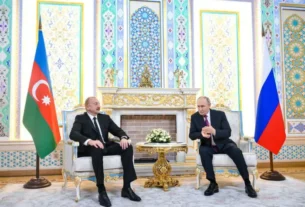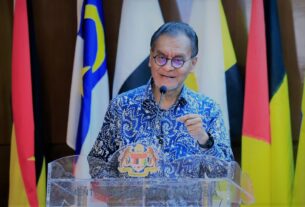Leh, Ladakh – On the high-altitude plains of Ladakh, where the Himalayas echo with silence and resilience, unrest has taken a tragic turn. Four people are dead. More than 70 are injured. The streets of Leh – usually bathed in spiritual calm – turned into zones of fury as youth and security forces clashed violently on Wednesday.
The spark? A movement that has been simmering for years – a demand for dignity, for protection, for a voice.
At the heart of this storm stands Sonam Wangchuk, a revered figure not just in Ladakh, but across India and beyond. An engineer, an educationist, and an environmental innovator, Wangchuk’s life’s work has always pointed toward peace, progress, and sustainability. But now, the government claims his words ignited this explosion.
In a statement that shocked many, the Ministry of Home Affairs (MHA) blamed Wangchuk directly for the violence, calling his hunger strike “provocative” and his rhetoric dangerously similar to calls for uprisings. They accused his followers of storming BJP offices, torching Leh’s Hill Council hall, and attempting to set a CRPF vehicle on fire – with personnel inside.
But Wangchuk strongly disagrees.
“This is not the Ladakh we nurtured,” he said, his voice quivering with emotion as he ended his hunger strike prematurely. “The pain that burst forth today is not mine alone – it’s every Ladakhi youth’s cry for justice.”
He insists the protests are not planned violence but an organic outburst, born of years of broken promises. “We were assured statehood, job security, and safeguards. Instead, we see inaction, exclusion, and erosion of our culture,” he said.
The Root of the Uprising
Since 2019, when Ladakh was separated from Jammu and Kashmir and made a Union Territory without a legislature, there’s been growing anxiety. Without the Sixth Schedule protections – a constitutional provision that guarantees tribal-majority regions autonomy over land, jobs, and resources – locals fear being outnumbered and overshadowed by outsiders.
What’s remarkable is the unity of Leh’s Buddhist-majority and Kargil’s Muslim-majority leadership under the Leh Apex Body (LAB) and Kargil Democratic Alliance (KDA). Their solidarity cuts across religion and region, and it speaks to the depth of the crisis. They’ve held protests, hunger strikes, and shutdowns for four long years. But promises remain unmet.
On Tuesday night, when Leh town shut down entirely, the writing was on the wall. Wednesday’s escalation wasn’t sudden – it was a pressure cooker blowing its lid.
The Face of a Movement
Wangchuk’s arrest earlier this year during a climate fast gave him even greater symbolic weight. Once known for inventing ice stupas to fight water shortages, and for reshaping education in Ladakh through SECMOL, he now represents the desperation of a generation.
“Sonam is not a politician. He’s a conscience keeper,” said one young protester. “We are not anti-national. We are asking for the very things we were promised.”
What’s Next? Dialogue or Denial?
As Ladakh reels, internet shutdowns and a heavy security presence remain in place. Lieutenant Governor Kavinder Gupta called the violence “an attack on democracy,” but stopped short of offering immediate solutions.
In the fog of fire and rhetoric, one message rings clear – Ladakh wants to be heard.
And that’s where the path forward lies. Not in lathi charges or curfews. Not in arresting leaders or shutting down dissent. But in listening – with empathy, with courage, and with a “cool mind,” as Wangchuk pleaded.
This is not just about a region. It’s about trust. About the promises a government makes – and whether it keeps them. About a people who are proud, peaceful, and principled, and who now feel pushed to the edge.
Let’s not let more blood stain Ladakh’s snow-capped valleys. The time to act is not tomorrow. It’s now.





